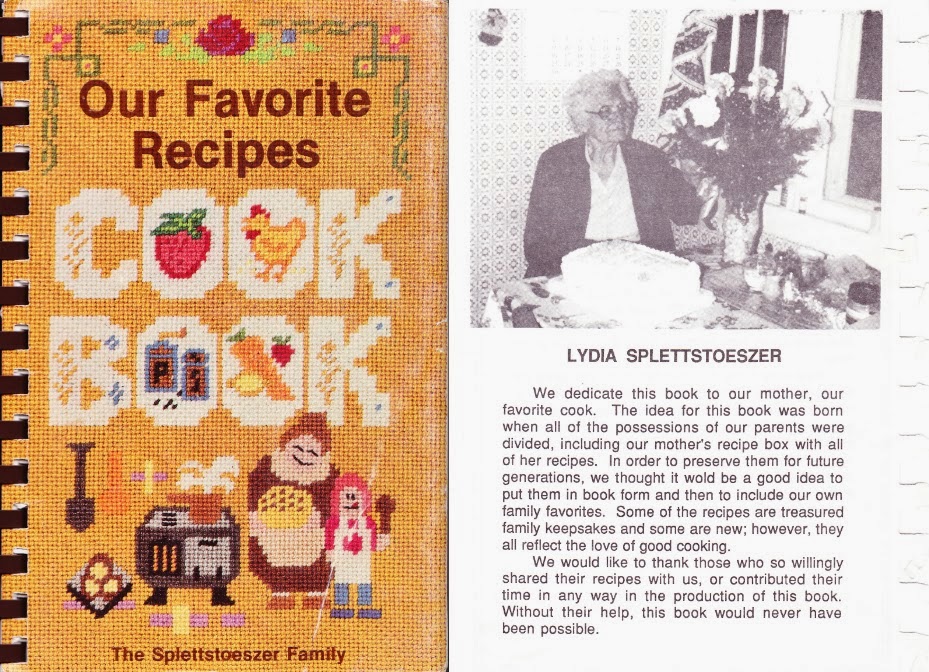When I think of banana bread, I think of my grandparents, Larry and Joyce. Wherever they are--at home or visiting or even with a college care package--the small, moist, brown loaves are sure to make an appearance. Both grandparents make the recipe equally well
and the foil is always lovingly wrapped the same way each time. You cannot
simply fold it over the bread. Later, I will share the art of the foil wrap.
My grandparents’ trip out to Arizona in my senior year of
high school coincided with the week of my knee surgery. I don't like to people to fuss over me when I am ill or injured but it was so wonderful to be pampered
with what seemed like an endless supply of the recipe. One of the days I was home from school, my Grandma spent several hours in the kitchen making loaves
of Banana Bread and dozens of muffins. Afterwards, we all gorged ourselves, eating the muffins for breakfast or for an afternoon snack and
slicing off a chunk of the loaf for a late night treat.
As soon as the Banana Bread is removed from the oven, it
fills the kitchen with a light scent of vanilla and banana. That, to me, is the
smell of "home sweet home". And though most people
would say that baked goods are best fresh out of the oven, my favorite
way to eat Banana Bread is cold. Whenever my grandparents have sent baked
treats (especially their Banana Bread) I take them out of the package and place
them directly into the refrigerator…that is of course, after taking a small
first bite. It's good when it's fluffy straight out of the oven, but I absolutely love it when the loaves are stored in the refrigerator
because the cold makes the bread dense--and somewhat refreshing, I think. There is nothing like the mouthwatering first cut of a loaf as the
butter knife slowly slices through. I have also found that no matter
what, whether hot or cold, a slice of Banana Bread spread with some butter is
the perfect balm for an especially bad day.
 |
| The cover and inner page of The Splettstoeszer Family Cookbook. |
When I asked to have a copy of the recipe from my Mom, I
discovered it was a multigenerational recipe going back to the Splettstoeszers,
family on my Great-Grandpa Harold Karels’ side. In fact, the photocopy of the
recipe is right out of the Sploettstoeszer Family Cookbook that was put
together upon the death of a family matriarch who loved to cook named Lydia. To continue her love of cooking and to
share her recipes as well as family memories, the Splettstoeszers printed a
book and shared it among the extended family. I am no cook, so it would have
been a very long time before I found the book on my own among my Mom’s cookbook
collection. But I have loved reading through the memories of an old farm
kitchen and other family favorites I had not known also originated from Lydia.
So I would like to continue her tradition by sharing the Banana Bread recipe.
While another recipe is listed first, my family has always
followed Lydia’s Banana Nut Bread Recipe just below it, though the nuts are
sometimes left out.
What You Will Need:
¾ Cup Oil
1 ½ Cups Sugar
2 Eggs, Well Beaten
1 Tsp Baking Soda
½ Cup Buttermilk
2 Tsp Vanilla
1 – 1 ½ Cups Mashed Bananas
2 Cups Sifted Flour
¾ Tsp Salt
Directions:
Mix in the order given: oil, sugar, eggs, baking soda,
buttermilk, vanilla, bananas, flour and salt. Bake at 350° F.
for 1 hour and 35 minutes. Makes 1 large and 1 small loaf.
The Art of the Foil Wrap:
Rip off a sheet of foil long enough to wrap around the loaf
and then some. Wrap the loaf lengthwise so that the two edges of the foil meet
above the loaf. Press them together then fold one over the other and roll the
excess until you reach the loaf. Simply fold the foil roll over the sides of
the loaf. This ensures a perfect seal, easy access, and classic packaging of
your finished Banana Bread.


















